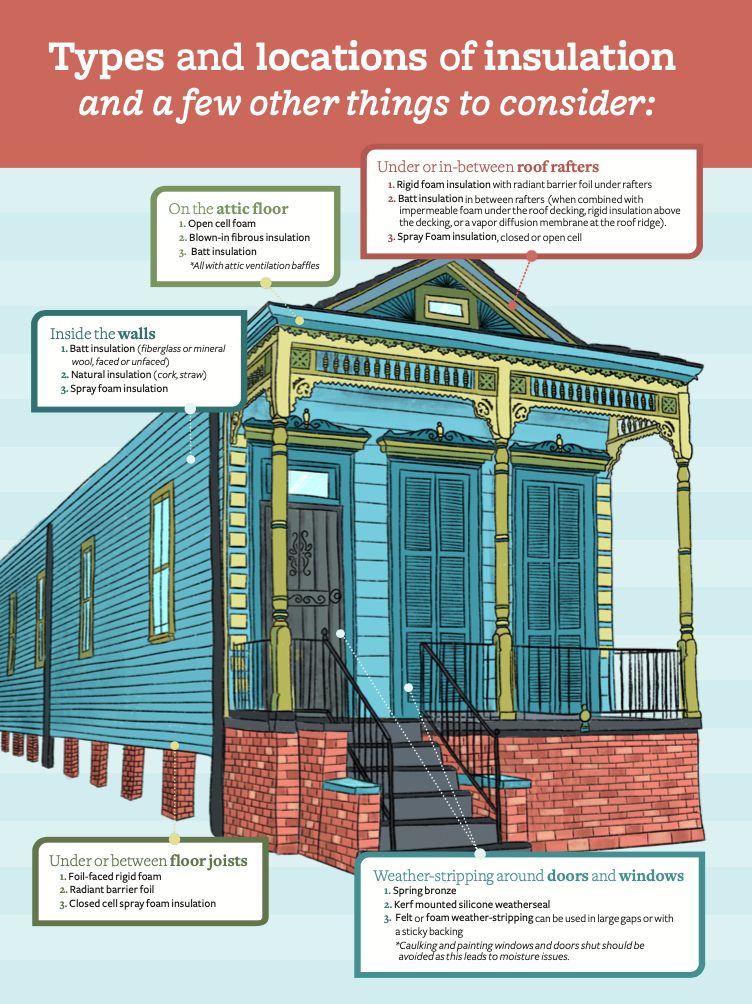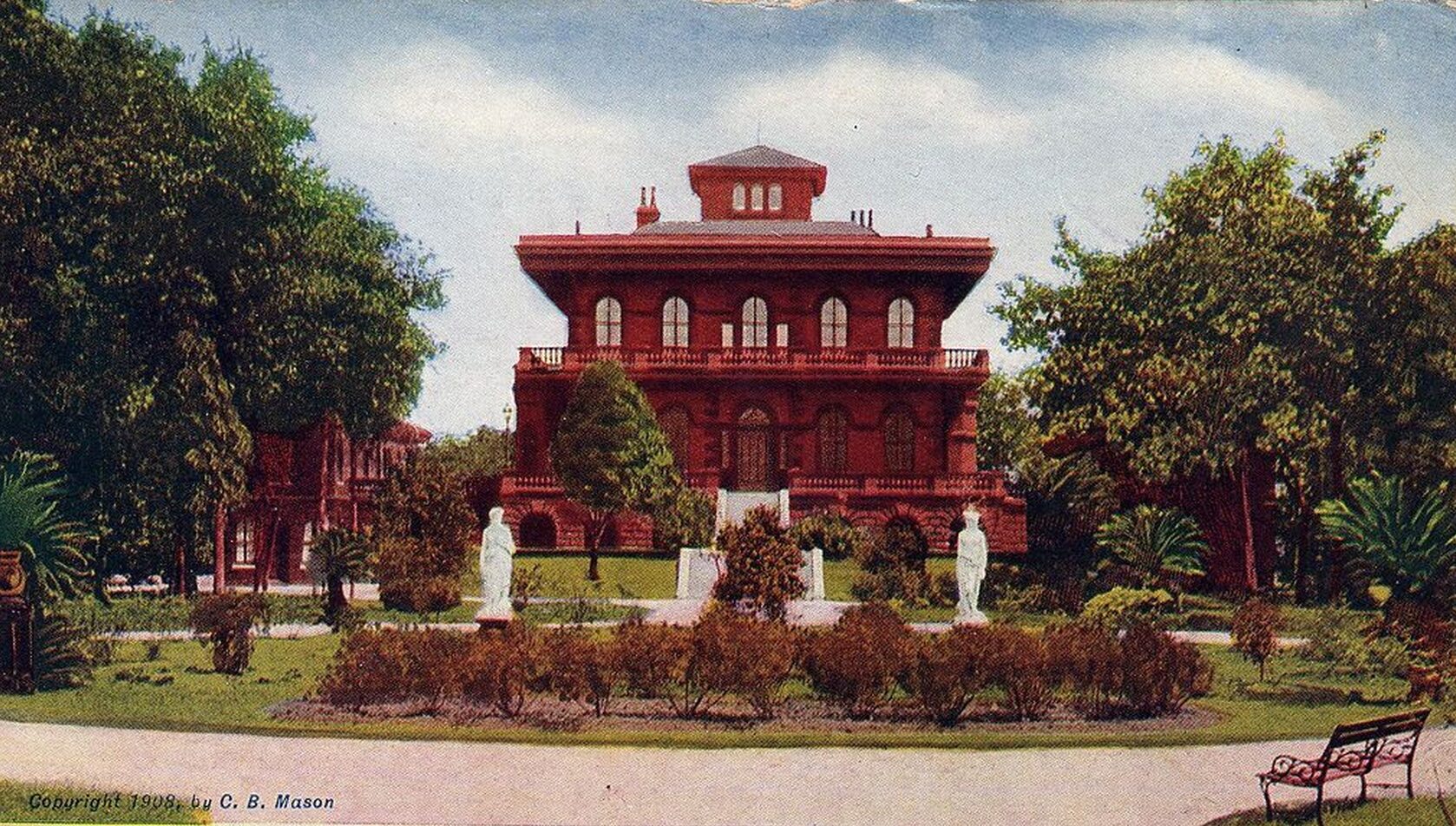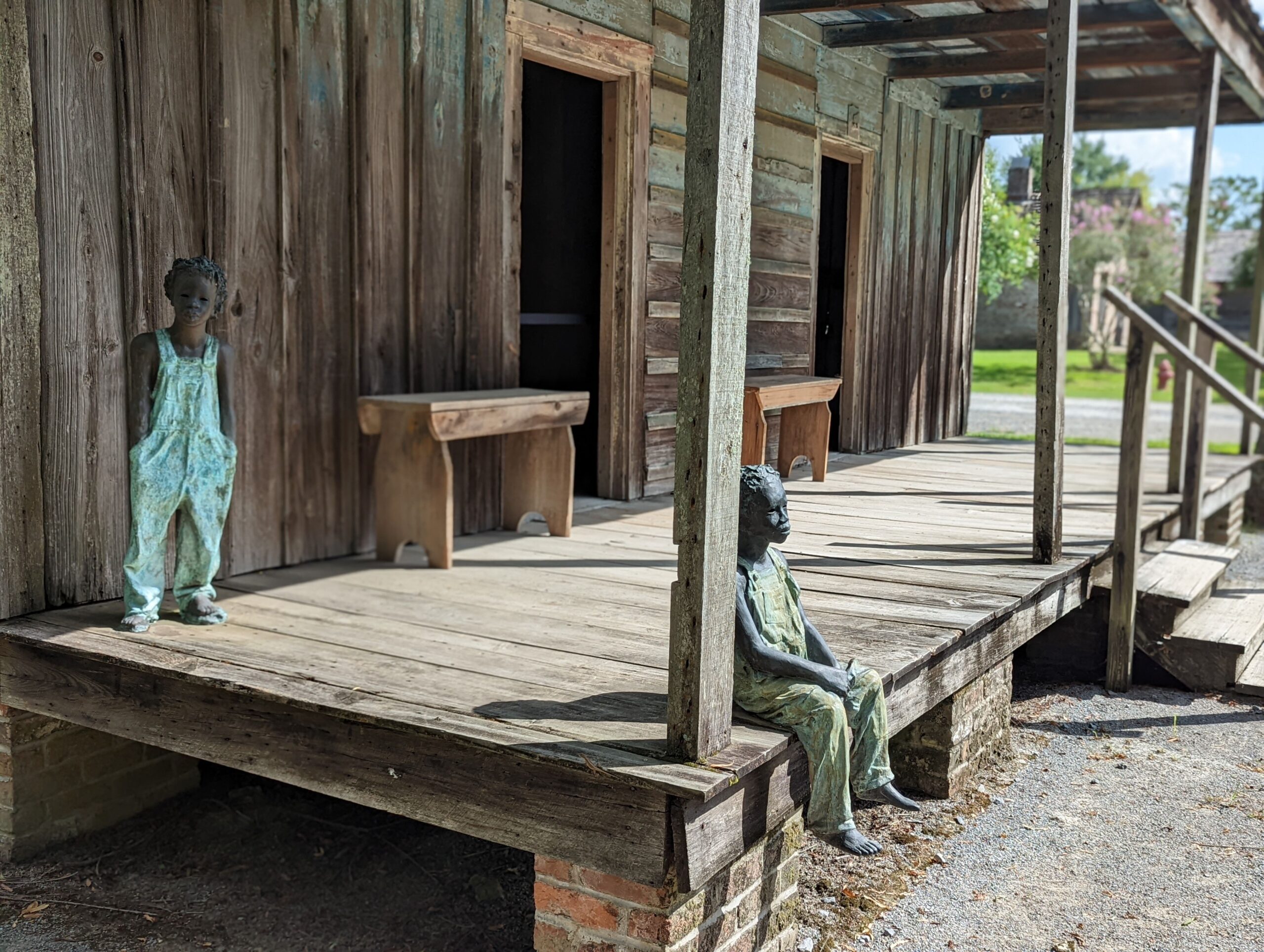Ask the Expert
In this Preservation in Print feature, we invite readers to send us your home-repair questions, and we’ll track down experts to answer them.
QUESTION
Help! I can’t keep my 100-year-old New Orleans house cool. I am constantly pumping the air conditioning. How do I make my home more energy efficient (and cool) before the real heat of summer arrives? I’ve been considering adding insulation, but I don’t know where to start.
— Anonymous
 THE EXPERT: Michelle Shoriak
THE EXPERT: Michelle Shoriak
PRC’s Director of Conservation & Education and Revival Grants Program Manager
Michelle’s Answer:
Improving energy efficiency, adding insulation, sealing air leaks. If you live in an older New Orleans home, these topics are likely on your mind, especially when the weather gets especially hot or cold.
We have all heard the benefits of insulating a house — lower energy bills and comfortable indoor temperatures — but achieving those benefits requires a delicate balance of choosing the proper insulation for your home, determining which air leaks to seal, and considering how these changes would interact with your home’s existing mechanical system.
Insulating an older home requires forethought and understanding of the building’s historic construction. Old New Orleans homes (pre-1940) were not built with air conditioning. They were made to allow air flow throughout, and the materials used were able to withstand changes in temperature, moisture/wetness and relative humidity. Therefore, insulating a new construction home versus insulating a historic home are two different conversations.
An old home with its historic construction and materials in place must be properly adapted to accept central air conditioning and heating as well as insulation. If we introduce artificial heating and cooling, it’s important to also improve the building as a whole, so that we are not losing air outside, which wastes energy (and money) and contributes to climate change.
So, how do you insulate your home without compromising the historic elements and construction? How do you ensure that the money you pour into your house doesn’t ultimately cause more issues? The answers to these questions are complex.
“There is not a one-size-fits-all remedy, but understanding the combination of factors that cause the problem reveals the most cost-effective solutions,” said Dr. Claudette Reichel, professor emeritus and former LSU AgCenter housing specialist and director of LaHouse Resource Center. When deciding whether to insulate under floors, for instance, homeowners need to consider the type of existing flooring (tile, pine, vinyl), the finish on wood flooring (is the floor sealed with a polyurethane?), and how cold or warm you keep your house.
Advertisement
You can cause moisture issues if these elements are out of balance or are not applied correctly. It’s essential to have an experienced professional, who understands the moisture dynamics of building science, to work out every detail because moisture can lead to mold and deteriorating materials.
Let’s circle back to what insulation is. To insulate is defined by Merriam-Webster as “to separate from conducting bodies by means of nonconductors so as to prevent transfer of electricity, heat or sound.” In this piece, we are talking about the reduction of heat transfer through an insulating material.
“The building industry uses the metric of R-value to measure the effectiveness of an insulator at slowing the transfer of heat across a building assembly (wall/ceiling/roof/floor), said Sophie Ashley, a builder and building enthusiast with a master’s in Sustainable Building Systems. “A higher R-value represents a higher resistance to heat transfer, so R-19 is a better insulator than R-13.”
Another important note: insulating and air sealing are two different things. Most insulation is not airtight (with spray polyeurathane foam being the only one that can be). “The air tightness of buildings is a complex topic that would require another article, but it is important to note that air leakage must be considered in the discussion about insulation. Air can carry a significant amount of heat and moisture (we heat/cool our buildings by moving air), which has a significant effect on energy efficiency, comfort and health,” Ashley said.
Next, where to insulate? There are four main points of heat loss and gain in a house. In order from greatest concern to least concern in our warm, humid climate, they are: roof, walls, windows and doors, and floors. Consider this order when deciding which project to tackle first. Properly insulating your house in this order should have the greatest impact.
Windows and doors cannot be insulated in the same way as roofs, walls and floors, but there are things you can do to make them more energy efficient and less drafty. After many years, windows and doors often will need to be re-fit or re-hung in their opening (especially after settling or foundation work). It’s important to make sure the window or door is adjusted to the opening and that all of the trim pieces are in the correct place. (These are called interior stops, parting beads and exterior stops.) Next, you can you add weatherstripping around your window with one of the types listed in the graphic with this article. Lastly, properly installed glass and glazing putty are integral to the window system (and doors with panes of glass). You can replace your historic glass with insulated or low-e glass, but it’s important to consider the extra weight the new glass will put on the wood joints, and ensure that it is still transparent as approved by the New Orleans Historic District Landmarks Commission.

Once again, picking the proper insulation for your home depends on its current conditions and existing systems, as well as your budget. Here are a few more things to consider:
- Spray foam insulation application should be carefully considered because improper application can lead to bad indoor air quality and product failures. Closed cell spray foam is also the least reversible option so ensuring accurate application is required. Some pest control companies won’t cover your house if you have spray foam insulation, so be sure to check with yours before moving forward.
- Uninsulated walls may count for the highest heat loss in your house in winter, and they are likely the hardest to insulate properly. Insulating an existing wall cavity might require removing siding or drywall/plaster and adjusting the wall cavity to allow for a properly functioning insulated wall system and water resistive barrier and drainage.
- A radiant barrier (typically a roll of foil) is not a substitute for insulation products that resist conduction of heat. It can reduce heat transfer by radiation not conduction but can be combined with insulation for added benefits in some applications.
- Always ensure that your home is properly shedding water away from the building (think gutters and downspouts, no leaks in the roof, and no internal leaks in bathrooms or kitchens) before starting an insulation project.
- If you are insulating a space, look at the building as a system: understand how the insulation will interact with natural air movement and moisture as well as mechanical systems in your home. For example, you will need to consider not only where and what type of insulation to use, but also how it will work in combination with other strategies, such as air and duct sealing, and the existing conditions of your home. Filling a cavity with insulation slows its drying capacity, so it’s crucial to prevent water leaks and allow water vapor to have the ability to dry through the interior finish to the inside when air conditioning. That’s why vinyl wallpaper should be avoided.
- Most importantly, hire a professional with documented knowledge and experience to handle insulation projects. It’s important to ask for references and examples of successful past projects.
Special thanks to Sophie Ashley, Claudette Reichel, and Michael Shoriak, co-owner of Cypress Building Conservation, for their contributions to this piece.
Advertisements









